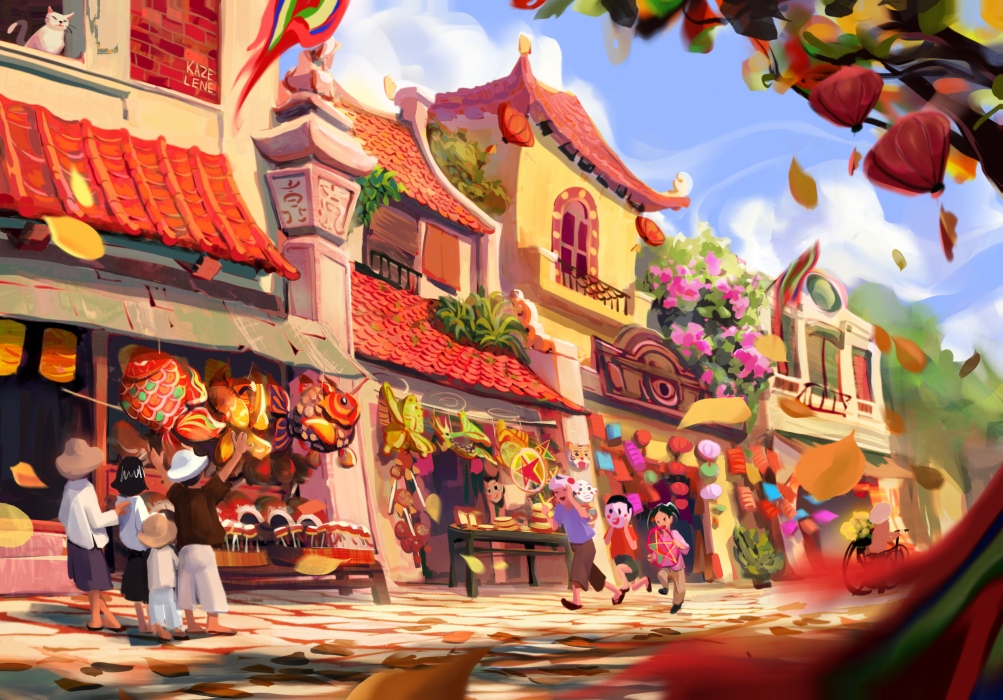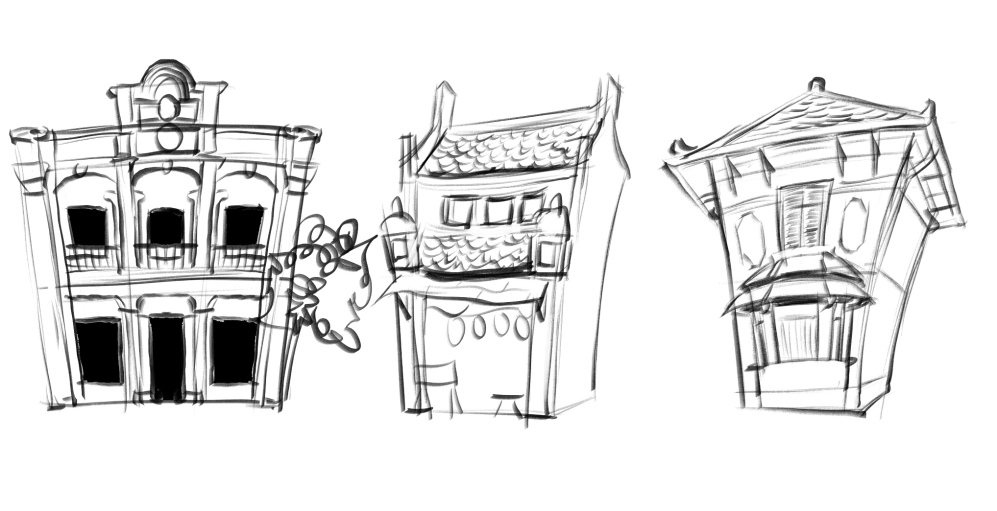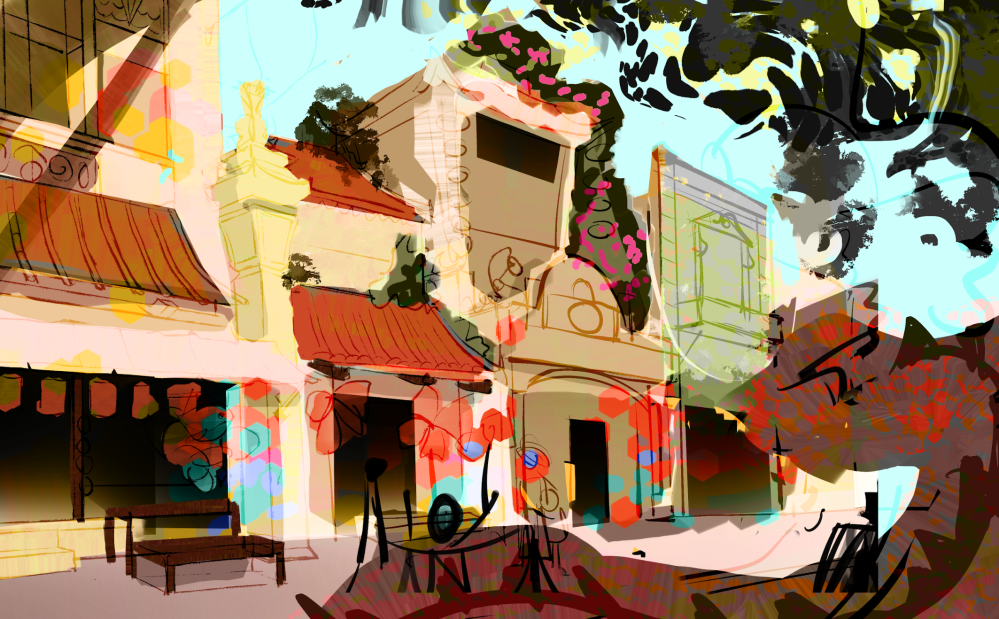


I’ve always fascinated by my country Vietnam’s architecture during the French colonial time and did a lot of research on different types of houses in this period. I thought it fits perfectly with the theme Growth & Evolution because despite being colonized and under foreign influences, our values and traditions as a independent nation still persisted and prospered. The architecture in this period adapted some aesthetics from the west yet did not abandon the indigenous qualities and the its functions in the lives of vietnamese people. I then decided to illustrate one of the famous streets in the Old Quarter of Hanoi: Hàng Mã. The most famous trait of the Old Quarter are its areas dedicated to one specific trade or guild. The crafts or guilds of each area gave the names to the streets of the quarter, so that most streets acquired names starting with hàng ("wares"). In this case, Hàng Mã is home to paper votive offerings and children’s toys. During the mid autumn festival, vendors would display tons of children’s favorites such as lion heads, lanterns of all designs to masks, disguise clothes and so on. Hang Ma Street's historical significance extends beyond its commercial activities. It is renowned for the distinctive architectural style that characterizes the ancient charm of Hanoi Old Quarter and has long been synonymous with the vibrant trade of paper products deeply rooted in Eastern culture.
16 Oct. 2023
1623 1 1
Like
Collect
Share


Comments